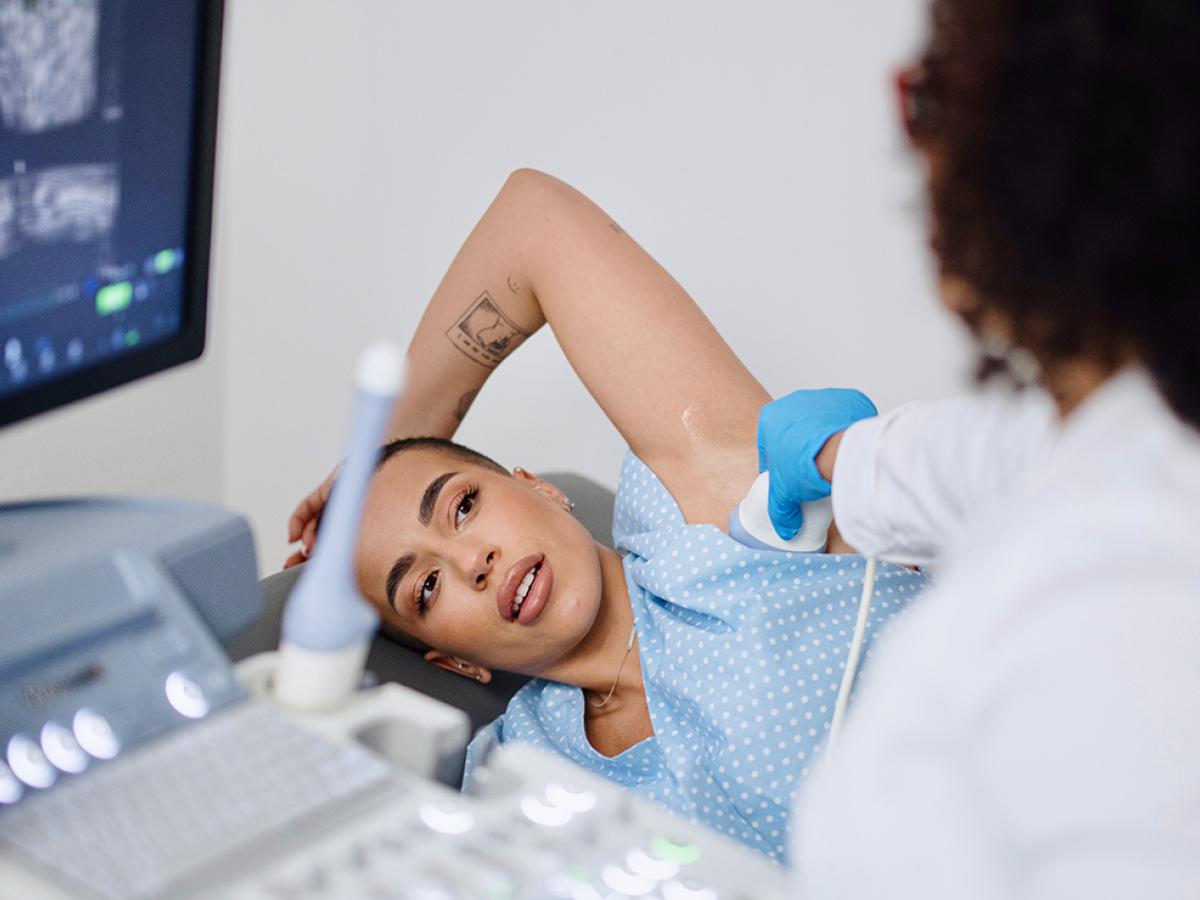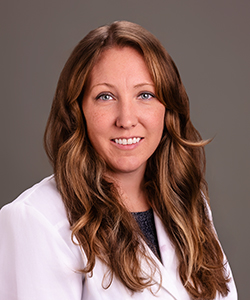October 29, 2024

Thanks to social media and aggressive marketing, most people know that following the screening guidelines and checking for breast lumps are the best ways to find breast cancer early. But less than half of adults are familiar with the symptoms of breast cancer other than lumps. And those less-common signs of breast cancer are critical for identifying it in people too young to be screened or between mammograms.

“Unfortunately, we are seeing an upward trend in breast cancer in younger women,” says Dr. Ashley Wilbers, an MU Health Care surgical oncologist. “The American Society of Breast Surgeons recommends screening at age 40 for people of average risk. But in people younger than 40, noticing a symptom is far and away the most common way to identify breast cancer.”
While a breast lump is the first symptom noticed by most women with breast cancer, it’s not the only one. Dr. Wilbers shares what you need to know about lesser-known signs of breast cancer:
Signs of Breast Cancer Other Than Lumps
One out of six people who have symptoms of breast cancer do not have a lump. Those people are also more likely to miss the signs or delay getting help.
“There is data to suggest that in the younger patient population, there’s a higher rate of these atypical symptoms,” Dr. Wilbers says. “But you have to know what to look for.”
The non-lump symptoms of breast cancer are often subtle, but even a small change to your breasts’ feel, shape or skin is worth checking out — even if you’ve recently had a mammogram.
Lesser-known signs of breast cancer in men and women include:
1. Breast Pain
Pain in your breast or nipple is very common and can be a sign of breast cancer in some women. But breast pain is also a symptom of many other underlying causes besides cancer, including:
- Benign (non-cancerous) cyst
- Breast abscess (infection)
- Hormonal changes
- Ill-fitting bra
- Increased caffeine intake
“It’s far more likely that your breast pain is due to some non-cancerous reason,” Dr. Wilbers says. “But if you experience consistent and worsening pain, always in the same spot — even after changing your clothing or reducing caffeine — it could be cause for concern.”
2. Nipple Discharge or Changes
Dr. Wilbers says that nipple discharge is another common non-lump symptom noticed by younger women with breast cancer.
“When we say nipple discharge, we’re talking about pus or bloody discharge that comes on without any nipple manipulation,” she explains. “And it tends to come out of the same spot on the nipple every time.”
Peeling skin or a rash around the nipple and nipple retraction — when your nipple turns inward, points downward or flattens — are other nipple changes that can signal breast cancer and should be evaluated further.
3. Redness
Breast skin redness is almost always abnormal — it can be a sign of infected breast tissue. It can also be an early sign of cancer.
Any breast cancer close to the skin may cause redness and irritation, but red skin occurring along with an orange peel look to the skin (peau d’orange) can be a sign of inflammatory breast cancer. This aggressive breast cancer is relatively uncommon but does have a lower survival rate. The cancer cells block the breast’s lymph channels which stops fluid from draining normally, leading to skin redness, thickening and warmth.
“Unless you’ve been out in the sun or have an injury or some other clear reason, reddened breast skin is not typical — even if it’s a relatively small breast area,” Dr. Wilbers says. “But a true diagnosis of inflammatory breast cancer generally requires that a third of the breast be inflamed.”
4. Breast Puckering or Dimpling (Indentation)
Skin that looks indented in one spot is called puckering. It can happen when a mass underneath the skin pulls on healthy tissue and ligaments. Another potential sign of breast cancer is skin dimpling or retraction. The skin on the breast may develop an uneven texture and look like the skin is being pulled inward.
“It literally looks like the skin is pulled inward or sunken relative to the area around it,” Dr. Wilbers says. “There may be an area of shadowing.”
Often, puckering or dimpling is slight and only noticeable if you look at your breast in the mirror with your arms raised. If you have changes in your skin’s texture and color in addition to puckering, it may be a sign of inflammatory breast cancer.
5. Armpit Swelling or Lump
Most people know to look for a lump in their breasts, but not everyone feels for a lump in their armpit. A lump in the armpit or near the collarbone is typically a sign of swollen lymph nodes.
Lymph nodes can swell for several non-cancerous reasons, including a viral illness or bug bite. But they can also be a sign of occult breast cancer, a very rare type of breast cancer that shows up in the lymph nodes first.
“If you feel an abnormal lymph node — and there’s no other reason your lymph nodes should be enlarged — you should see a physician,” Dr. Wilbers says.
When to See a Doctor About Breast Changes
The first step in early detection of breast cancer is getting familiar with your breasts. That way, you’ll notice when something changes.
“You should be way more familiar with your breast tissue than your doctor,” Dr. Wilbers says. “It’s up to you to alert someone if you notice something new or different.”
She adds that it’s better to see your doctor and have them find nothing than ignore the symptoms and wait until the condition is more advanced.
“Even if you don’t have a family history of breast cancer, you need to see someone if something in your breast doesn’t feel right,” Dr. Wilbers says. “Unfortunately, a lack of a family history does not mean that you can’t develop breast cancer at a young age.
Next Steps and Useful Resources
- Behind on your screenings? Schedule a same-day mammogram today.
- Learn more about cancer screenings at MU Health Care.

